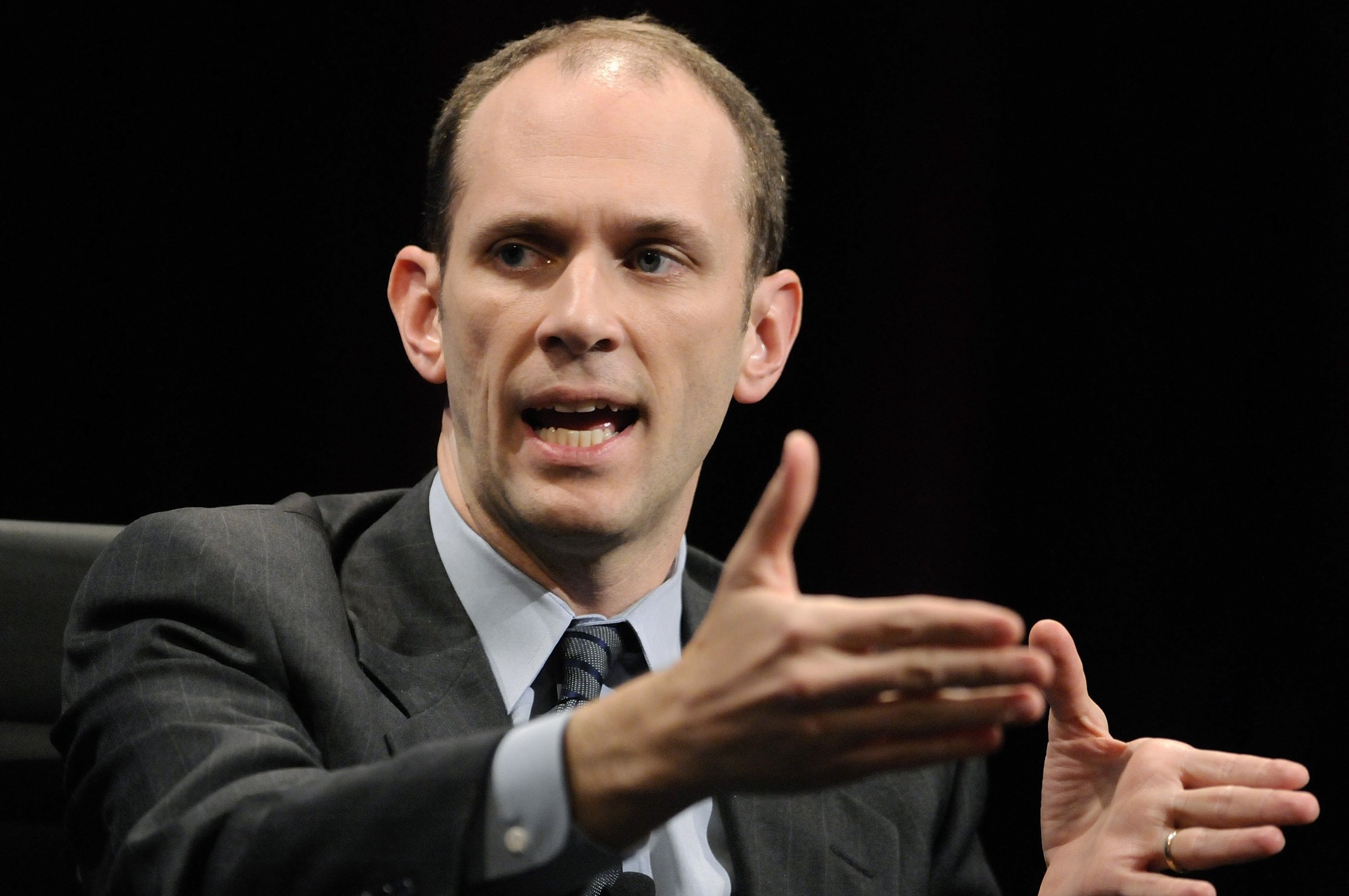 White House Council of Economic Advisers Chairman Austan Goolsbee gestures as he addresses the 2010 meeting of the Wall Street Journal CEO Council in Washington, November 16, 2010REUTERS/Jonathan Ernst
White House Council of Economic Advisers Chairman Austan Goolsbee gestures as he addresses the 2010 meeting of the Wall Street Journal CEO Council in Washington, November 16, 2010REUTERS/Jonathan Ernst
- Austan Goolsbee, President Barack Obama’s former chief economic adviser, tells Business Insider he sees decent, but not spectacular, economic growth ahead.
- Goolsbee says he wants to see solid signs of sustained wage growth before making the case that the economic recovery is complete and the job market is fully healed.
- Gooslbee believes the Federal Reserve may have trouble justifying continued interest rate hikes if inflation and wages don’t pick up.
For Federal Reserve officials and Wall Street economists, the lack of wage growth in the face of falling US unemployment is an intriguing intellectual puzzle. For American workers, it’s part of an all-too-concrete daily struggle that leaves millions on the edge of financial calamity.
In an interview with Business Insider, President Barack Obama’s former economic adviser Austan Goolsbee, now back at the University of Chicago, said stagnant wages represent one key factor that could prevent the Federal Reserve from continue raising interest rates in 2018 and 2019 as it currently expects to do.
“My forecast for the economy is decent but not spectacular, very similar to the last six years — and that makes me think that the Fed won’t be able to hike rates as much as they think they will,” Goolsbee said.
US economic growth has hovered around 2% for much of the recovery period following the Great Recession, which was the worst downturn in modern history, even if the past couple of quarters have shown quarterly annualized readings around 3%.
In another sign of continued economic softness, US inflation has been consistently below the Fed’s 2% goal.
“They have undershot their inflation target quarter after quarter, year after year, and the fear is that it may have undermined the Fed’s credibility a bit,” Goolsbee said.
“Now when the Fed says they are just about to hit the 2% target or that they are afraid of rapid inflation, many look at the forecasts from each of the last 32 quarters and say ‘didn’t you say that five, four, three, two years, even one year ago, too?'”
For several years running, Fed officials have kicked off the year offering overly optimistic forecasts for economic growth, which then translated in plans for raising interest rates that later had to be tamped down. This pattern has forced central bank policymakers to revise down their estimates for potential gross domestic product growth in the US closer to 2% from a pre-crisis expectation of 3% average annual growth.
Fed officials have often touted the 4.1% unemployment rate as a sign that the US economy has reached “full employment.” This has helped them justify gradual interest rate increases starting in December 2015, to a 1% to 1.25% range. Another increase is widely anticipated at this month’s policy meeting.
Gooslbee is less convinced about the notion of full employment.
“Not long ago, the market was saying that 6.5% unemployment rate was full employment. It’s gone down and down without wages going up,” he said.
“Job creation has slowed this year compared to last despite GDP growth being slightly higher so maybe we are finally running out of people, but no one really knows why we don’t see too rapidly increasing wages if there is a labor shortage,” Goolsbee added.
“Let’s hope things start improving on the wage front, but no one should feel too comfortable until you actually see it. Predictions of imminent changes have just cried fire too many times.”
So much for that massive infrastructure package
President Donald Trump and a Republican-led Congress are currently rushing through an effort to enact large tax cuts widely assessed to largely benefit wealthy individuals and corporations.
For Goolsbee, even passage of such bill, which after making it narrowly through the Senate must now be combined with the House version of the legislation before making it to the president’s desk, would be a Pyrrhic victory for Republicans, since its deep unpopularity would likely cost Republicans dearly in the 2018 Congressional elections.
Polls show the legislation is deeply unpopular and widely seen as favoring the rich, and not just among Democrats.
Moreover, the political capital, not to mention actual dollars, devoted to tax cuts, will surely mean less room for compromise on another key campaign promise of the president’s — to rebuild America’s infamously lagging infrastructure.
Goolsbee sees that effort as all but dead now.
“I think it doesn’t go anywhere,” Goolsbee said. “New presidents get a year or so to do anything and I think they’ve used it up.
“Maybe they can pass a tax cut to close out the year but past that, the Democrats do not trust the president’s word in negotiations and his infrastructure plan was rooted in having the federal government spend less money on infrastructure and instead to privatize and turn things over to states or private companies.”
Put another way, Trump’s window of opportunity for moving forward on major economic policy initiatives may close before the president can say “Merry Christmas.”













